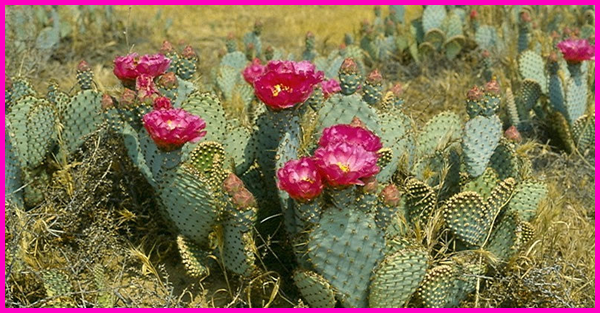.
The Bad Thing For Biofuel Is That It Takes Precious Farmland Out Of Food Production
A group of UK researchers have discovered that a group of arid country plants are actually good to use as biofuel.
Crops like corn and sugar cane are typical crops used in the manufacture of traditional biofuel such as bioethanol.
One of the plants the researchers found to be good for biofuel production is the prickly pear cactus. Just think fuel from marginal land that is pretty well no good for nothing.
Competition between food and fuel crops means that large scale bioethanol production is therefore controversial.
But plants that perform photosynthesis through a crassulacean acid metabolism (CAM) system may enable bioenergy production without disrupting food supplies.
CAM plants are adapted to grow on arid and semi-arid land, where low or unpredictable rainfall makes conventional agriculture difficult.
Semi-arid land is estimated to take up 12–18% of the world’s land area and while some of this is already used for farming, much of it is relatively unproductive grazing land.
CAM plants can flourish here by conserving water more effectively than traditional crops—they capture carbon dioxide from the air at night and convert it to malate, which fuels photosynthesis during the day.
By avoiding the need for gas exchange during the day, they reduce evaporative losses through their leaves and so require much less water per unit of biomass than other plants.
Though well known, CAM plants have barely been studied as potential bioenergy crops.
However, new analysis by researchers from the University of Oxford, Tropical Power, Imperial College London and the Royal Botanic Gardens at Kew, say that CAM species like Opuntia ficus-indica (prickly pear) and Euphorbia tirucallli could make a huge contribution to sustainable biogas production.
Although some CAM plants such as pineapple and agave are already cultivated on a large scale, they are not currently employed for biogas production.
‘There is no doubt that plant science and breeding improves crops,’ says Mason, the problem is that ‘we are with CAM plants where we were with cereal crops 10,000 years ago.’
But with increasing research interest and sustainable electricity in ever greater demand, that situation might change quickly.
Get More Details At The Original Article
.



